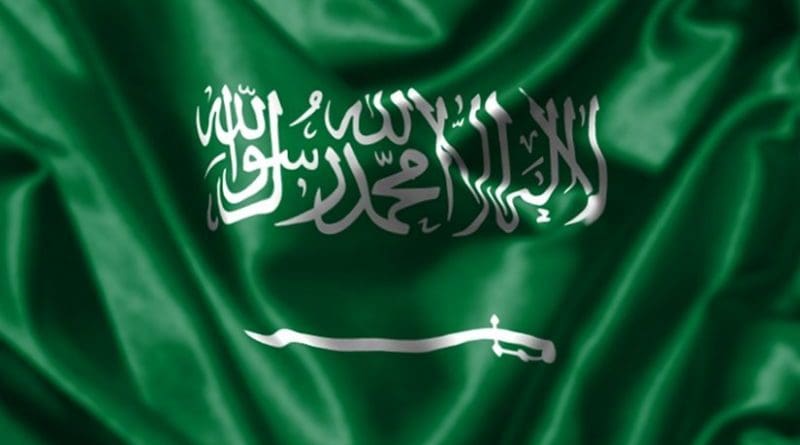Saudi Arabia’s Nuclear Intentions – Analysis
On August 4, 2020 the Wall Street Journal reported its discovery that Saudi Arabia, with help from China, has built a facility for extracting yellowcake from uranium ore. Uranium yellowcake is an ingredient used in fueling nuclear reactors. The sparsely populated site is a remote desert location near the small city of Al Ula.
Just how long the facility ‒ secret till now ‒ has been up and running was not disclosed, but its existence indicates that the kingdom’s nuclear programme is moving ahead, perhaps with the aim of Saudi Arabia eventually developing its own nuclear weapons. This possibility has been on the cards ever since the ill-conceived deal that ex-US President Barack Obama, in conjunction with the permanent members of the UN Security Council and Germany, masterminded with Iran back in 2015.
Saudi-Iranian rivalry dates back to well before the Iranian revolution of 1979, but the Iranian nuclear deal undoubtedly aggravated and intensified Saudi Arabia’s concerns about the intentions of the revolutionary regime. It believes that Iran is seeking to dominate the Middle East politically and to extend Shia Islam across the Muslim world, and uses terrorism and subversion to achieve its aims. Logic dictated that the best way to counter these unacceptable objectives would be by matching Iran’s nuclear intentions.
As far back as 2013 the BBC was quoting reports that nuclear weapons made in Pakistan on behalf of Saudi Arabia “are now sitting ready for delivery.” In a domestic TV programme the BBC said that Amos Yadlin, a former head of Israeli military intelligence, had told a conference in Sweden that if Iran got the bomb, “the Saudis will not wait one month. They have already paid for the bomb. They will go to Pakistan and bring what they need to bring.”
Saudi Arabia’s intention to do just that goes back even further. For years it provided generous financial support to Pakistan’s defence sector, and Saudi’s defense minister visited Pakistan’s nuclear research centre in 1999 and 2002. In 2009 Saudi’s then King Abdullah is quoted as saying that if Iran crossed the threshold, “we will get nuclear weapons.”
In that 2013 BBC television programme a Pakistani intelligence officer said he believed “the Pakistanis certainly maintain a certain number of warheads on the basis that if the Saudis were to ask for them at any given time they would immediately be transferred.”
Now, perhaps, Saudi Arabia is set on a path intended to lead to the development of its own nuclear weapons programme.
Of course it is all a foreseeable consequence of Obama’s 2015 nuclear deal. For a president who came to office vowing to move toward the elimination of nuclear weapons, what Obama achieved was to leave in place Iran’s 5,000 centrifuges and a growing research and development program, and the assurance that in a brief 15 years Iran would be free to resume its nuclear weapons programme. Leaders of the Sunni Arab states including Saudi Arabia argued at the time that the long-term effect of the deal would be a drive for nuclear proliferation in the Middle East.
The Washington Post believes that for the present Saudi Arabia is focused on becoming what is known as a nuclear “hedger”, that is, a country without a dedicated nuclear weapons program, but which can weaponize relatively quickly, thanks to an advanced enrichment and reprocessing capability ‒ a status already achieved by Iran. Hedging permits a country to develop peaceful nuclear power that could be switched to military uses, while avoiding the financial and political costs of going for a full-scale nuclear military capability.
Back in 2019, the Washington Post identified positive steps taken by Saudi Arabia in the previous few years to enter the nuclear power market, and to foster competition among potential suppliers. In 2015, as a first step towards achieving full nuclear fuel cycle capability, Saudi acquired a research reactor from Argentina. It then solicited bids for the supply of nuclear power reactors and an enrichment plant. In addition to Pakistan, countries such as France and South Korea began expressing an interest in selling nuclear technology to Saudi Arabia, and by mid-2019 the US, Russia and China had apparently joined the bidding war. China, perhaps within its Belt and Road project, won the commission to construct Saudi’s uranium yellowcake facility.
The Trump administration seems agreeable to the idea of supplying nuclear capability to Saudi Arabia without imposing too severe restrictions on its future use, perhaps as a means of deterring approaches by the kingdom to other potential suppliers who might not be in a position to impose effective leverage in a future crisis.
By early 2020 US companies were in serious negotiation with Saudi authorities about a planned tender for nuclear reactor construction in Saudi Arabia. Meanwhile several US senators have warned the administration against a nuclear cooperation deal with Saudi Arabia, fearing it could set off a nuclear arms race in the Middle East. But that possibility has been present ever since the nuclear deal with Iran was passed. It is the Obama legacy.

